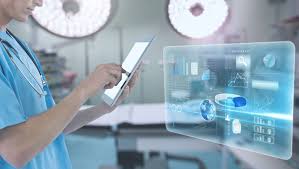The Role of Importers in MDR Compliance for Software as a Medical Device (SaMD) Companies
As multiple facets of high-end technology are leveraged in healthcare, the use of software in medicine will only continue to rise. 
Software as a Medical Device (SaMD) is a rapidly growing industry. In 2019, it was pegged at €17.8 billion. With a compound annual growth rate of 21.9%, it is expected to be worth €83.2 billion in 2027.
What Constitutes SaMD?
There are various types of software used in the medical field. Products are used in administrative healthcare settings, diagnosing patients, delivering treatment, and more.
According to definitions set by the European Union, software for administrative use is referred to as software for general purposes. Meanwhile, software used in in vitro diagnosis is classified as a medical device—also referred to as SaMD or Medical Device Software (MDSW).
MDSW can be used independently or in tandem with a physical device.
These descriptions will have an impact when EU regulations are implemented. Medical Devices Regulation (MDR) was implemented in May 2021, while the more stringent In Vitro Diagnostic Medical Regulations (IVDR) was implemented in May 2022. EU MDR and IVDR set the policies regarding the import and export of SaMD.
Section 17.2 in Annex I of the MDR states: “For devices that incorporate software or for software that are devices in themselves, the software shall be developed and manufactured in accordance with the state of the art taking into account the principles of development life cycle, risk management, including information security, verification and validation.”
SaMD Classifications
Medical devices of all types fall into one of four risk classes: Class I, IIa, IIb or III. Class I devices are the lowest risk category (with correspondingly lighter regulatory requirements) while Class III devices are the highest risk with, accordingly, the highest regulatory burden. The key to understanding risk classification of software as a medical device is MDR Annex VIII Rule 11, which sets out a classification system that can be applied to any medical software product. While there is scope for software being in any of the four risk classes, by virtue of Rule 11 most software as a medical device will fall into Class IIa.
Manufacturers of all devices (including software) apart from Class I devices must gain approval from a Notified Body before applying a CE-mark.
Import and Export of SaMD
Importing or exporting software is a tricky process. Technically, if the SaMD does not involve hardware, the manufacturer can easily send the digital product directly to the end-user.
However, given the MDR and IVDR’s stringent requirements, SaMD companies still need a third-party distributor registered under the EU and an Importer take the role of the importer. This role is crucial as it will be financially liable for compliance with the provisions of MDR and IVDR.
If the importer has reason to believe that the product does not conform with the requirements, they are responsible for notifying the manufacturer and ensuring that the product will not be placed on the market until the necessary corrections have been made.
Registration and Labeling
SaMD manufacturers and importers must register with EUDAMED or the European Database for Medical Devices. SaMD companies and manufacturers must list their designated importer for each product.
Based on the EU MDR and IVDR article 13(3), The importer must be clearly identified on product labeling, such as the device, packaging, and the accompanying documents.
Required importer information includes their name, registered trade name / registered trademark, registered place of business, and contact address.
Since not all SaMD comes with a physical product, the language of Article 13(3) may be confusing. This is clarified in Section 3.1: “Accompanying information is not necessarily a written or printed document but could involve auditory, visual, or tactile materials and multiple media types.”
SaMD Compliance
All SaMD companies are expected to comply with European Regulatory requirements even if they manufacture cloud-based digital products.
When exporting products within the EU market, non-EU manufacturers must appoint a legal importer and register their information before the appropriate EU database. The importer is responsible for coordinating with the manufacturer and competent authorities in the Member State.
More Information
GrowthImports is an ISO13485 regulatory and fiscal import partner in Europe and the United Kingdom for worldwide medical device manufacturers.
GrowthMedics is an ISO 13485 market development provider serving worldwide medical device companies with their international sales expansion in European and Middle Eastern Healthcare markets.
